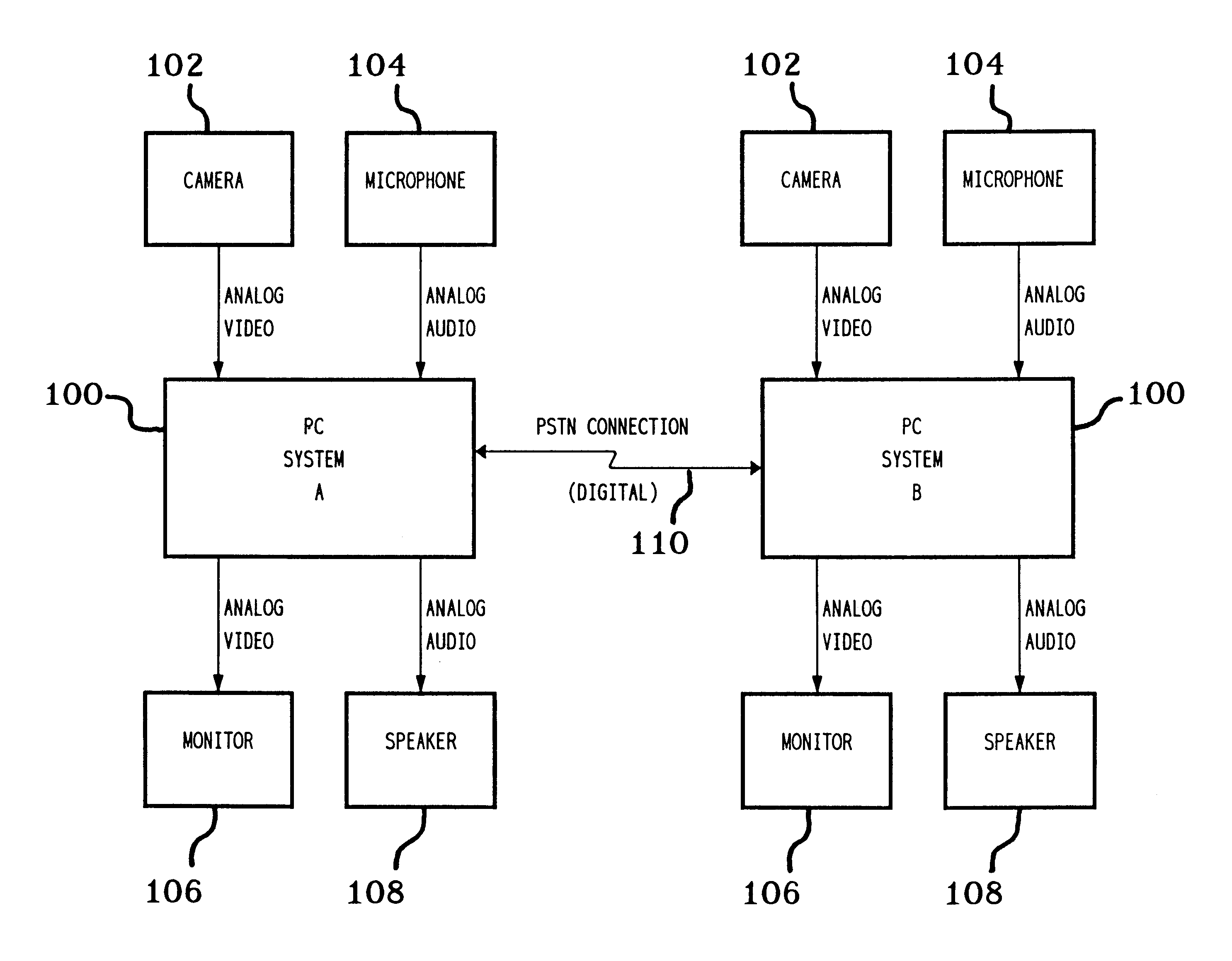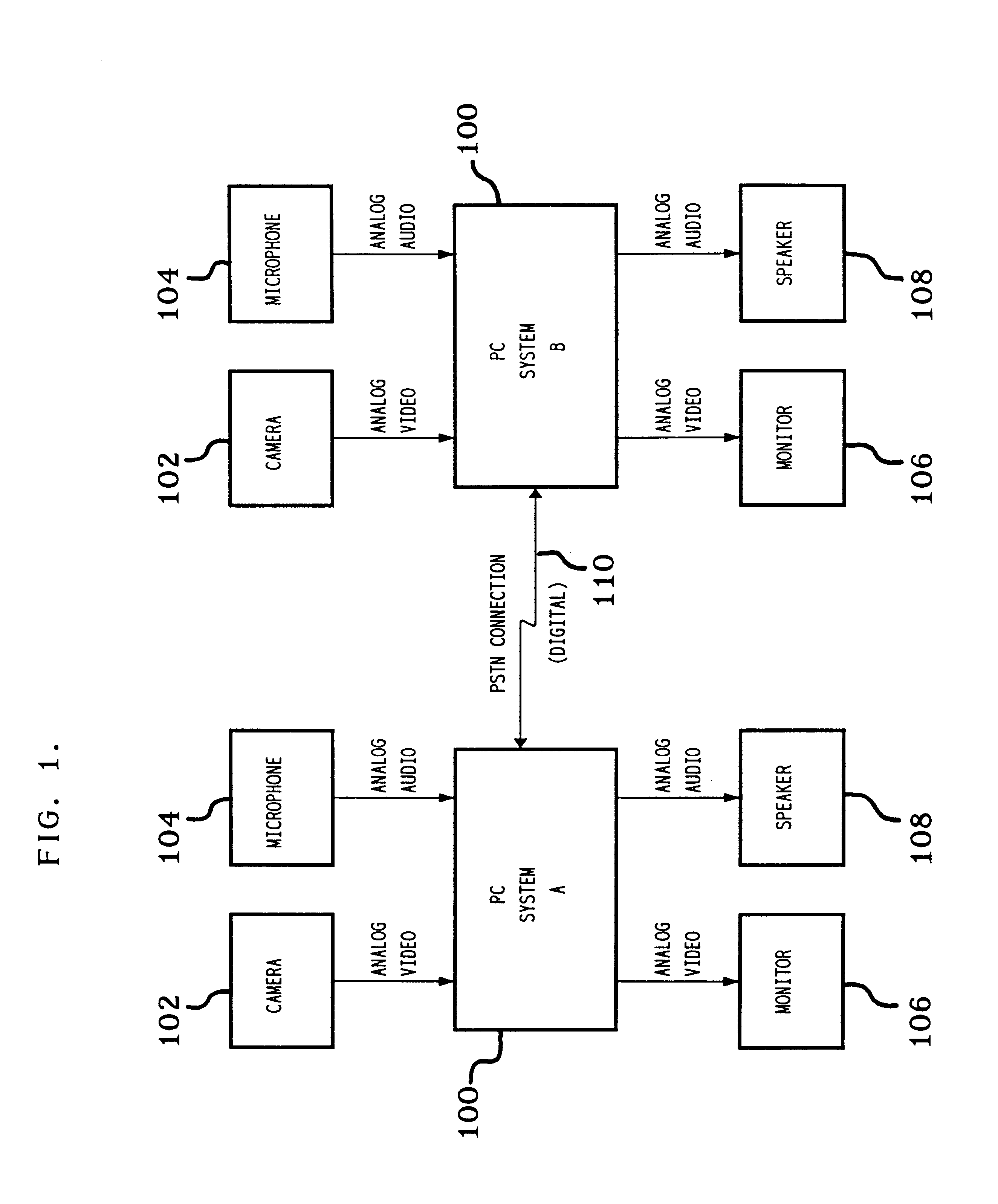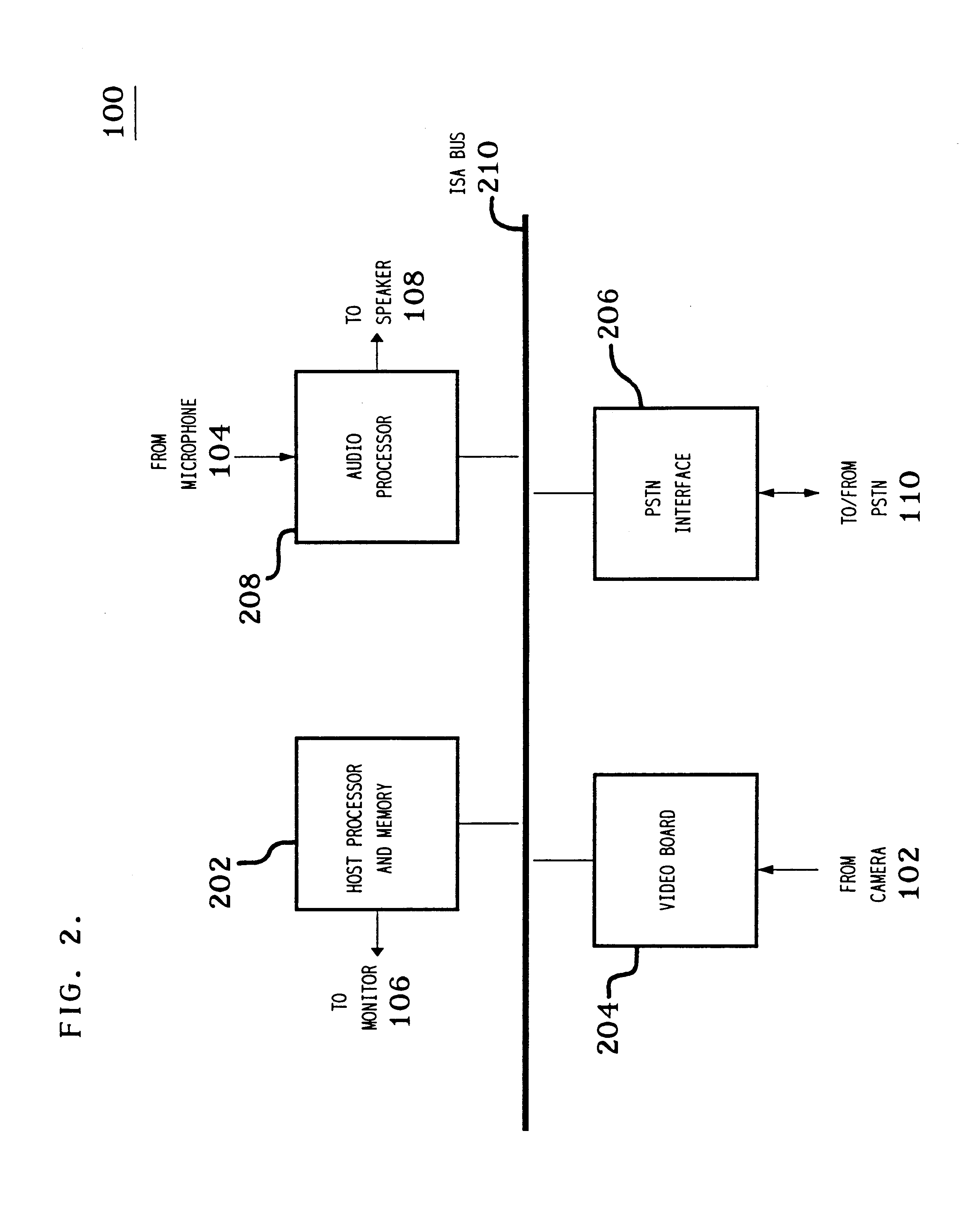Using numbers of non-zero quantized transform signals and signal differences to determine when to encode video signals using inter-frame or intra-frame encoding
a quantized transform signal and signal difference technology, applied in the field of signal processing, can solve the problems of less readily available isdn connection, more expensive than pstn connection, and bandwidth greater than that provided by pstn connection, and conventional video compression methods cannot be used to support audio/video conferencing over pstn connection
- Summary
- Abstract
- Description
- Claims
- Application Information
AI Technical Summary
Problems solved by technology
Method used
Image
Examples
Embodiment Construction
)
In the present invention, video image signals are encoded based on blocks of (8.times.8) pixels. Each block may be encoded as a skipped block, an intra block, or an inter block. The signals for a skipped block are assumed to be identical to the signals for the corresponding block of the previous frame. An intra block is encoded without reference to any previous frame. An inter block is encoded based on the differences between the current block and the corresponding block of the previous frame.
For both intra and inter blocks, the (8.times.8) block of signals is transformed using a discrete cosine transformation (DCT) to generate DCT coefficients. For intra blocks, the DCT coefficients are further encoded using run-length encoding and variable-length encoding. For inter blocks, DCT coefficient differences are generated based on the DCT coefficients for the current block and DCT coefficients corresponding to the corresponding block of the previous frame. These DCT coefficient differen...
PUM
 Login to View More
Login to View More Abstract
Description
Claims
Application Information
 Login to View More
Login to View More - R&D
- Intellectual Property
- Life Sciences
- Materials
- Tech Scout
- Unparalleled Data Quality
- Higher Quality Content
- 60% Fewer Hallucinations
Browse by: Latest US Patents, China's latest patents, Technical Efficacy Thesaurus, Application Domain, Technology Topic, Popular Technical Reports.
© 2025 PatSnap. All rights reserved.Legal|Privacy policy|Modern Slavery Act Transparency Statement|Sitemap|About US| Contact US: help@patsnap.com



